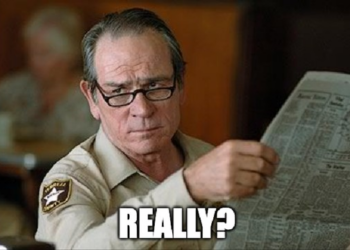Most war films try to help us understand war. Warfare does something else. It dares to admit that it may make no sense at all.
Directed by Alex Garland and co-written with former Navy SEAL Ray Mendoza, whose memories form the bedrock of the film, Warfare strips away everything that usually defines the war movie genre: the exposition, the character arcs, the soundtrack swells, the slow-motion deaths, the tidy conclusions. It offers, instead, a claustrophobic, unbearably honest account of one unit’s time in Ramadi, Iraq, on November 11, 2006. What separates Warfare from its peers isn’t its technical precision, though it is exacting, but its unwavering commitment to the lived memory of combat. It humanizes without romanticizing. It condemns without preaching. And it refuses to allow war to become entertainment, even when rendered with cinematic brilliance.
Warfare doesn’t want to make you cry. It wants to make you sit in it. And it’s in that sitting … that the film finds its power.
There are no heroes in Warfare, no monologues about patriotism, no clean moral resolutions. There is only time: agonizing, stifling, nauseating time — time spent waiting, scanning, adjusting, breathing. Nearly half the film passes before a single shot is fired. And when the violence does arrive, it feels neither climactic nor stylized. It is abrupt, disjointed, and horrifying in its banality. A grenade shatters the stillness. Screams follow. And the audience is not rewarded with catharsis. We are made to sit in the noise and the blood and the panic. There is no music to guide us out.
This is, perhaps, the film’s greatest achievement: it rejects the seductive rhythm of combat. In most war films, even the more thoughtful ones, violence is structured like choreography. Whether you’re watching the shaky chaos of Saving Private Ryan, the sun-drenched set pieces of Black Hawk Down, or the long shots of 1917, the audience knows, on some level, they are being guided through something designed. Even films that grapple with trauma, like The Hurt Locker, still preserve the machinery of plot and perspective. Warfare does not. There is no story arc. Just a disorienting plunge into the terrible realities of war.
The soldiers, played by a surprisingly high-wattage cast rendered almost indistinguishable beneath grime, goggles, and gear, are not sketched as individuals. There are no backstories. No wives back home. No letters read aloud. The most we learn of them is that they are young and anxious and passing around energy drinks and bad jokes. That is the point. The film’s central character is the unit itself — not in a poetic sense, but a literal one. It moves as a hive, breathes as a cluster, suffers as a singular body. What happens to one ripples across all, but not in a way that gives us emotional beats or sentimental bonding. This is war as organism, and the unit is both predator and prey.
Warfare’s most harsh truths are not in what it shows, but in what it refuses to explain. The Iraqi family trapped inside the house is barely acknowledged. The local scouts, crucial to the mission, are sent into danger first — and die first. The civilians huddled in fear remain unnamed, unseen, nearly forgotten by the men with guns. But the film doesn’t frame this as an oversight. It is a feature of the mission. Of the war. Of the mental fog required to survive it. And in that, Warfare becomes one of the few American war films that implicates without sermonizing. It shows us, in granular detail, how the human cost of war includes not just those who die, but those who are never seen at all.
This isn’t Garland’s first foray into combat realism. His 2024 film Civil War explored a fictional American conflict through the eyes of war journalists. But where that film flirted with abstraction and thematic ambiguity, Warfare is visceral and unrelenting. Its politics are implicit. You don’t need a policy brief to understand what this film is saying. The senselessness is the message. The memory is the evidence.
And that, too, is vital. Warfare is based not on mission logs or Pentagon reports, but on personal memory — Mendoza’s, and those of other soldiers who were there. That caveat, delivered on a title card at the film’s start, isn’t just a narrative device. It’s a quiet declaration of limits: this is what they remember. And that is all you will get. No omniscient narrator. No strategic overview. Just the fragments that remain — sounds, flashes, the weight of a wounded man, the smell of blood.
It is rare for a war film to let the audience feel the psychological toll of inaction, not just action. Warfare’s first half is a study in dread. The soldiers are in a house chosen for no tactical reason — “I like it,” one says — and they wait. They whisper, sweat, twitch. Every creak could be a death sentence. Every second is thick with possibility and pointlessness. The film forces the audience to experience the inertia of war: not as cinematic pause, but as the terrifying stasis before everything breaks.
A Film’s Use of Geography
What makes Warfare uniquely devastating is that it understands trauma as geography. The battlefield is not a backdrop. It is a living, oppressive space. The walls, the corridors, the corners of the room where something might happen but hasn’t yet — all of it adds to the sense of suffocation. And when the soldiers finally leave, the camera lingers just long enough on what remains: the family surveying the ruin of their home. The insurgents re-entering the streets. No resolutions. No winners.
This final choice — brief, almost dismissive — is, in its way, the film’s most honest moment. It acknowledges what most war films avoid: that the story did not end with the Americans. That there were other lives unfolding, even as the camera followed only one.
In a country where less than 1 percent of the population served in Iraq or Afghanistan, Warfare is a jolt to the system. For most Americans, the war was a headline, a debate topic, a vague memory of fear and flag-waving. For the men and women who lived it, it was noise, blood, exhaustion, and — perhaps most damagingly — nothing. No purpose. No glory. Just another day trying not to die, and trying not to think too hard about those who did.
There will be those who criticize Warfare for its narrow lens. For its refusal to offer more from the Iraqi perspective. For its uncompromising commitment to one side’s memory. But that criticism misses the point. The film does not pretend to be whole. It is a fragment. And in that fragment is something devastatingly true: a portrait of war not as event, but as erosion.
Warfare doesn’t want to make you cry. It wants to make you sit in it. And it’s in that sitting — in the waiting, the confusion, the aftermath — that the film finds its power. This is not the war movie we’re used to. And thank God for that. Because if this is what war really is, and Warfare makes a strong case that it is, we’ve spent too many years watching the wrong films.
READ MORE from John Mac Ghlionn:
Conor McGregor and Tucker Carlson Walk Into a Bar
The Fall of Harvard: How America’s Oldest University Became Its Most Expensive Liability


![NYC Tourist Helicopter Falls into Hudson River, Siemens Executive and Family Among Those Killed [WATCH]](https://www.right2024.com/wp-content/uploads/2025/04/NYC-Tourist-Helicopter-Falls-into-Hudson-River-Siemens-Executive-and-350x250.jpg)





![Green Day’s Cringe Trump Diss Ends in Fire and Evacuation [WATCH]](https://www.right2024.com/wp-content/uploads/2025/04/Green-Days-Cringe-Trump-Diss-Ends-in-Fire-and-Evacuation-350x250.jpg)
![Red Sox Fan Makes the ‘Catch of the Day’ with Unconventional ‘Glove’ [WATCH]](https://www.right2024.com/wp-content/uploads/2025/04/Red-Sox-Fan-Makes-the-‘Catch-of-the-Day-with-350x250.jpg)
![Bikini Clad Spring Breakers Prove Our Education System is Failing Students [WATCH]](https://www.right2024.com/wp-content/uploads/2025/03/Bikini-Clad-Spring-Breakers-Prove-Our-Education-System-is-Failing-350x250.jpg)






